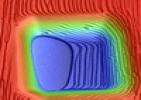Frequently Asked Questions
What is the purpose of the GoodNanoGuide?
What is a wiki and why a wiki for the GoodNanoGuide?
What exactly is a "protected" wiki and why is the GoodNanoGuide a protected wiki?
Who are the contributors, or "providers," to the GoodNanoGuide?
Can I become a provider to the GoodNanoGuide?
Where can I find instructions on how to edit the GoodNanoGuide?
What is the purpose of the GoodNanoGuide?
The GoodNanoGuide is structured along a conceptual framework for occupational risk management designed to control and minimize exposures to engineered nanomaterials in the presence of uncertainty. It sits on a wiki-software platform intended to provide a modern, interactive forum that will fill expert’s need for up-to date information and remains current as new and better practices develop. The goal of the GoodNanoGuide is to create a central repository for good practices for handling nanomaterials safely that can be used and contributed to by people from all over the world.
What is a wiki and why a wiki for the GoodNanoGuide?
Wikipedia, which is probably the best known of all wiki-software websites, defines a wiki as "a collection of Web pages designed to enable anyone who accesses it to contribute or modify content, using a simplified markup language. Wikis are often used to create collaborative websites and power community websites. . . . Wikis are used in business to provide intranets and Knowledge Management systems. . . ." See Wikipedia's wiki page for more information.
What makes the wiki a desirable platform for the GoodNanoGuide is the ease of creating and editing content. Ideally, each page that appears on the GoodNanoGuide will be written by and for practitioners, many of whom have knowledge they are unlikely to seek to publish in a journal. Additionally, unlike a peer reviewed publication, a wiki can be published instantly. Moreover, unlike some governmental publications, a wiki can be easily modified. Perhaps most importantly, a wiki has the potential to keep pace with the rapid advances being made in nano-environmental, health and safety research and occupational safety research. As soon as new knowledge is created, it can be published to the wiki for all to review, discuss, modify or even dispute.
Wikis have their roots in the open source values of shared ownership. With minimal controls, they can be an effective knowledge management tool designed by a collaborative community. The Article page has the information of interest. The Edit page permits members to create and update content. The History page permits version control; i.e., every version of a page is saved so that members can recreate a previous version as needed. The Discussion page permits members to talk about each page and explain the reasons behind a change.
The GoodNanoGuide is structured slightly different. What you see most is the Article page with the information of interest. Instead of a Discussion page, you will find below the Article a Comment 'button,' which allows for discussion about the information that appears on the page. The GoodNanoGuide also has a Forum that permits greater communication between everyone involved with the project, including you. That said, the Edit page and the History page have been restricted so they are only available to Providers, i.e., experts that contribute knowledge about good practices for handling engineered nanomaterials in an occupational setting. The GoodNanoGuide thus is considered a "protected" wiki, which is further explained in the response to the next question.
What exactly is a "protected" wiki and why is the GoodNanoGuide a protected wiki?
Wiki sites can be completely public or completely private, or protected. A ‘protected’ wiki-site allows for access control whereby everyone can view the pages on the site but only members of the site may edit pages.
The reason why the GoodNanoGuide is a protected website should be understandable: We like to think of the GoodNanoGuide in the same way that everyone thinks of a professional journal. In this regard, we recognize that people looking for knowledge about good workplace practices have to start somewhere, so the organizers of the site wanted to make sure that the GoodNanoGuide functions as a good place to start. Therefore, to accomplish this objective, the GoodNanoGuide has limited providers of information that appears on the site just to professional with expertise in nanomaterials, occupational and environmental health and safey, technical editing, legal issues, etc.
Who are the contributors, or "providers," to the GoodNanoGuide?
Providers are experts that have been approved by the GoodNanoGuide's Implementation Committee to contribute, or comment on, information to the GoodNanoGuide, or to edit information already on the GoodNanoGuide. If you would like to see a list of current providers, please link to the Expert Provider Index.
Can I become a provider to the GoodNanoGuide?
We hope so! Please proceed to the How to Become a Provider page for more information.
Yes. We built the GNG Forum for anyone that would like to ask questions about, or make suggestions or comment on, the GoodNanoGuide. Your input is critical to making the GoodNanoGuide the best it can be.
The GoodNanoGuide is currently hosted by Dr. Stacey Harper at Oregon State University in partnership with nanoHUB.
Where can I find instructions on how to edit the GoodNanoGuide?
We have added a separate Helpful Wiki Hints page to assist Expert Providers in their efforts to add or edit content found on the GoodNanoGuide. Remember first, however, you must register as an Expert Provider before you gain the ability to edit the GoodNanoGuide.


